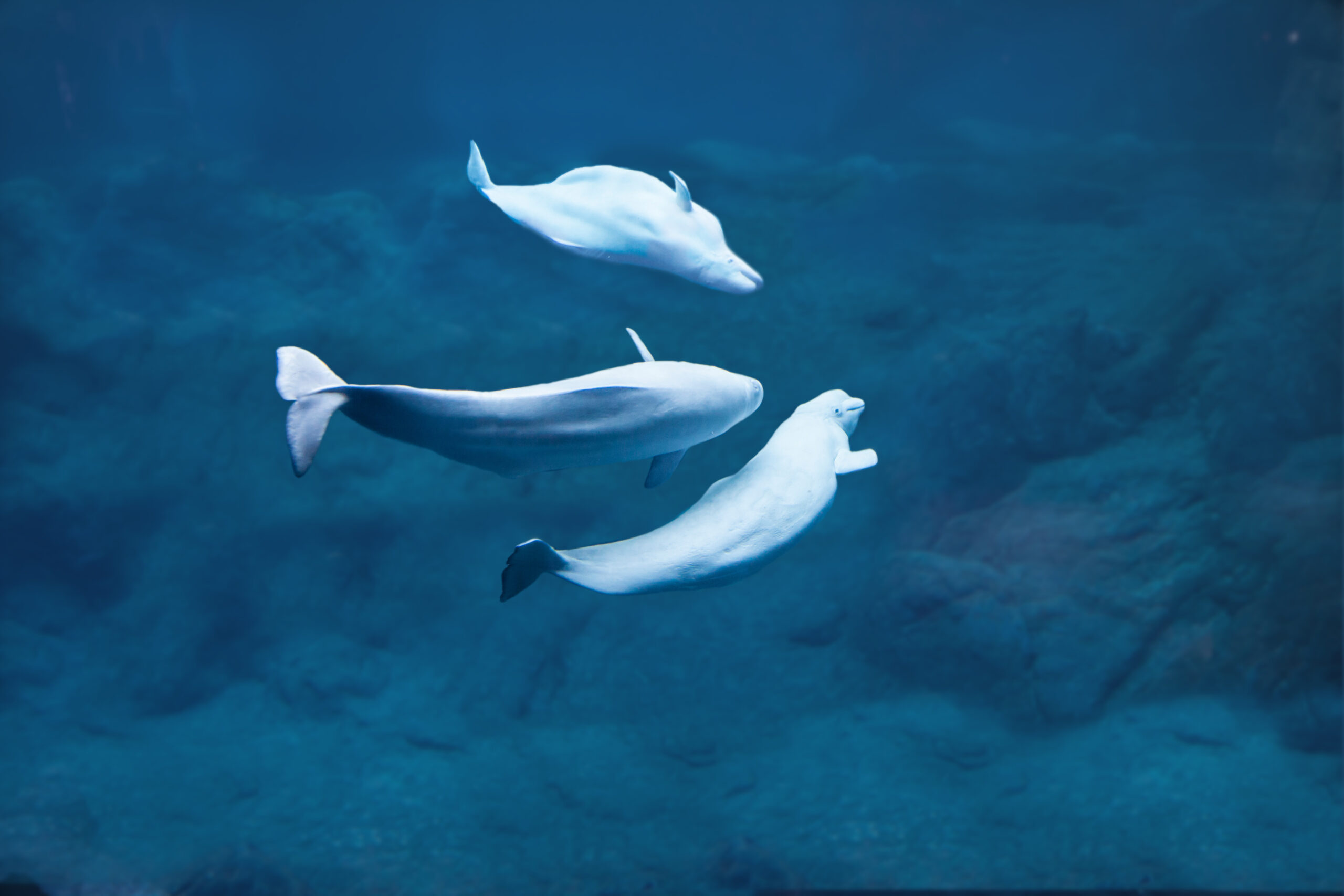Facts About Beluga Whales
The cold never bothered them anyway

There’s no doubt about it: I could never survive living in the Arctic. I am definitely not well-suited for the cold, ice and wind. But what makes the Arctic inhospitable to some animals (like me) makes it the perfect home for others. The animals that dwell in the Arctic are supremely well-adapted to their environment—the cold never bothers them anyway.
A popular and highly recognized animal that lives in the Arctic is the beluga whale. These majestic animals are known for their distinctive white color and can be found swimming in the chilly waters of the Arctic and subarctic.
It’s me. Hi, I’m the Beluga. It’s me.
How exactly do beluga whales survive the cold? Well, they have a layer of blubber that’s five inches thick. Perfect, right? They also have a dorsal ridge atop their backs to help navigate through the bitterly cold, choppy waters of the Arctic. Belugas enjoy eating a buffet of fish, crustaceans, cephalopods and worms. Unlike other whales, beluga whales have a very flexible neck that allows them to nod and turn their heads in all directions. Belugas can live up to 90 years. And did you know that baby beluga whales are actually grey? It’s true. They become white as they advance to adulthood.
Get Ocean Updates in Your Inbox
Sign up with your email and never miss an update.
Beluga whales are very social animals. They regularly gather in groups called pods, which can range from just a few friends to hundreds of whales. Beluga whales are called the canaries of the sea because of the songs they sing in order to communicate with each other, find food and figure out where they are under water. They make a wide range of sounds including whistles, clicks, moos, chirps and squeals. Unfortunately, you couldn’t hear their entire performances. Some of their “songs” are at frequencies that humans can’t hear. Noise pollution from increased shipping traffic in the Arctic could make it much more difficult for them to communicate.
And, anyone who watched the movie Finding Dory knows that beluga whales use echolocation (just like bats) to “see” underwater. Echolocation allows them to hunt, avoid obstacles and find each other. While hunting, these echolocation clicks bounce back off of their prey and provide an audible “view” of their target.
You Can Help Beluga Whales
All beluga whale populations are protected under the Marine Mammal Protection Act (MMPA). NOAA Fisheries has designated the Cook Inlet beluga whale population in Alaska and the Sakhalin Bay-Nikolaya Bay-Amur River stock in Russia as depleted under the MMPA. In addition, the Cook Inlet distinct population segment has been listed as an endangered species under the Endangered Species Act.
The Arctic is heating up fast. The largest threat to Arctic species is climate change, affecting both their habitat and the food they eat. As sea ice melts, more waterways are opening up for ship traffic, posing yet another threat to Arctic wildlife. With increasing ship traffic comes more noise, more water pollution and a higher risk of damaging oil spills.
Beluga whales are just one of many species that rely on a healthy Arctic to survive. It’s up to us to protect the Arctic—will you support our work with a donation today?
Your gift to Ocean Conservancy supports our fight to strengthen regulations that protect Arctic waters. From the Arctic Circle to the halls of Congress, we’re working every day to combat the effects of carbon pollution and protect vital ocean ecosystems from the threat of oil spills.
Give today to support all our conservation efforts including protecting Arctic waters and Arctic wildlife.